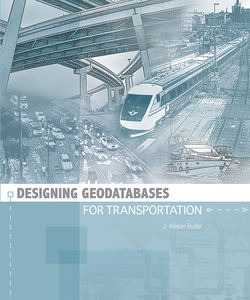Читать книгу Designing Geodatabases for Transportation - J. Allison Butler - Страница 14
Book organization
ОглавлениеThis book is divided into three parts. Part 1 covers the basics of geodatabase design. Part 2 explores the various ways transportation geodatabases may be structured. Part 3 offers a variety of advanced topics on transportation geodatabase design.
As with any book intended for a wide range of readers, Designing Geodatabases for Transportation covers a lot of foundational concepts dealing with database design in general and geodatabases in particular. While it may tempting for a more knowledgeable reader to skip the first few chapters, even the advanced data modeler should review the content of part 1 in order to be familiar with the terms and presentation employed in this book. Similarly, you may want to explore the modal chapters in part 3 related to forms of transportation not included in your own geodatabase because there may be ideas you can use.
One of the more obvious demarcations in the book is the distinction between the segmented data structures used mainly by local governments and commercial database vendors and the route-based structures used primarily by state and provincial transport agencies. Because they are conceptually less complex, design concepts more applicable to segmented data models are generally presented in earlier chapters and those concepts with greater applicability to route-based models are covered in later chapters. Do not skip the content directed to one side of this dividing line because this distinction in application is often one of convenience. Many design techniques are applicable to both basic data structures.
Some content is targeted to a specific audience. These passages will be placed in sidebars identified by one of two icons.
| The building block icon identifies basic knowledge about a fundamental aspect of the topic. | |
| The rocket icon denotes information suitable for advanced readers that describes what is happening behind the scenes, gets into the details of a topic, or offers guidance for specific tasks. |
Transportation geodatabases have been difficult to construct in the past, in large part because of a lack of basic guidance on how to address the many problems presented by this unique data and the business processes it supports. Designing Geodatabases for Transportation is intended to provide basic guidance on how to construct transportation geodatabases in a manner that addresses these inherent problems.
